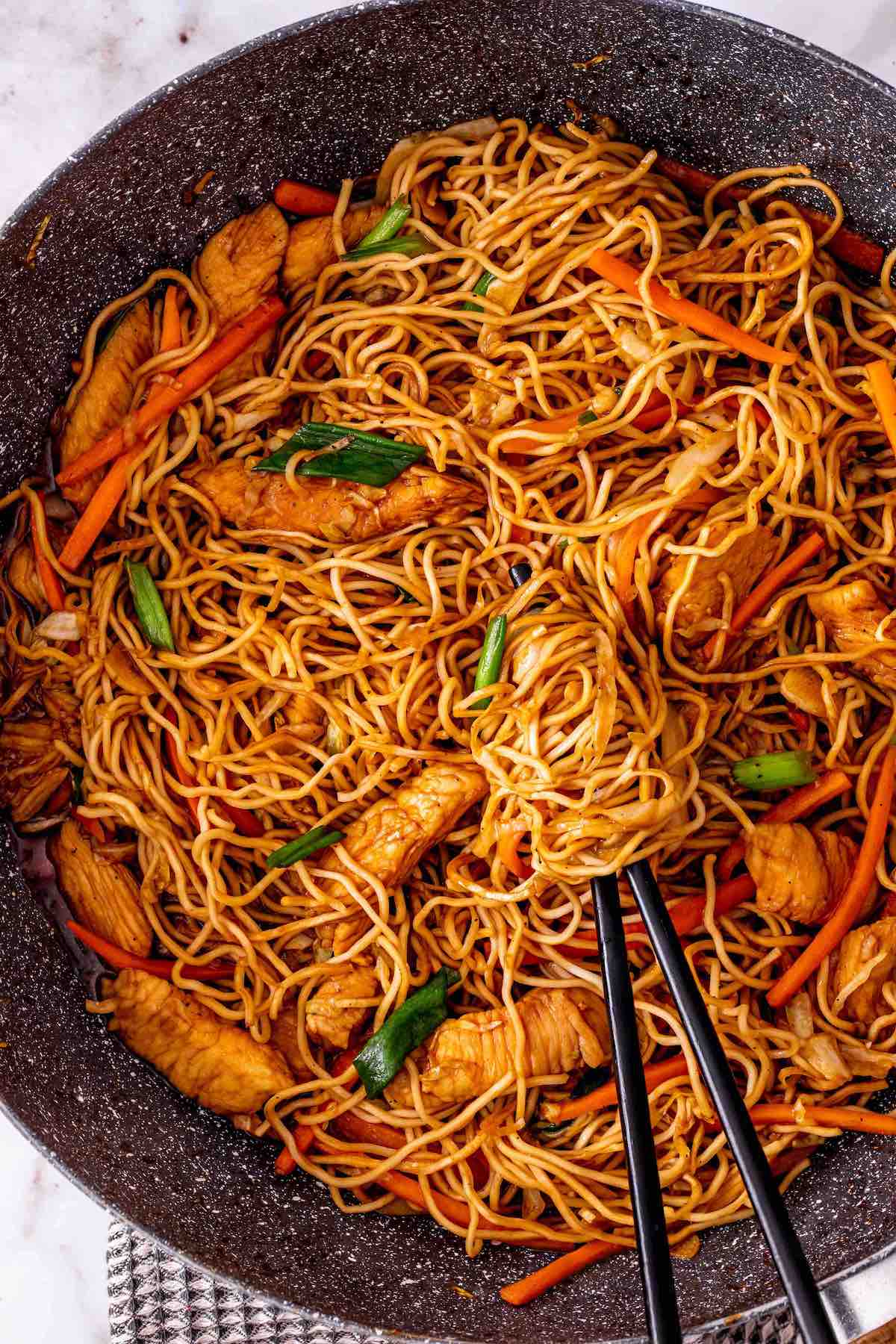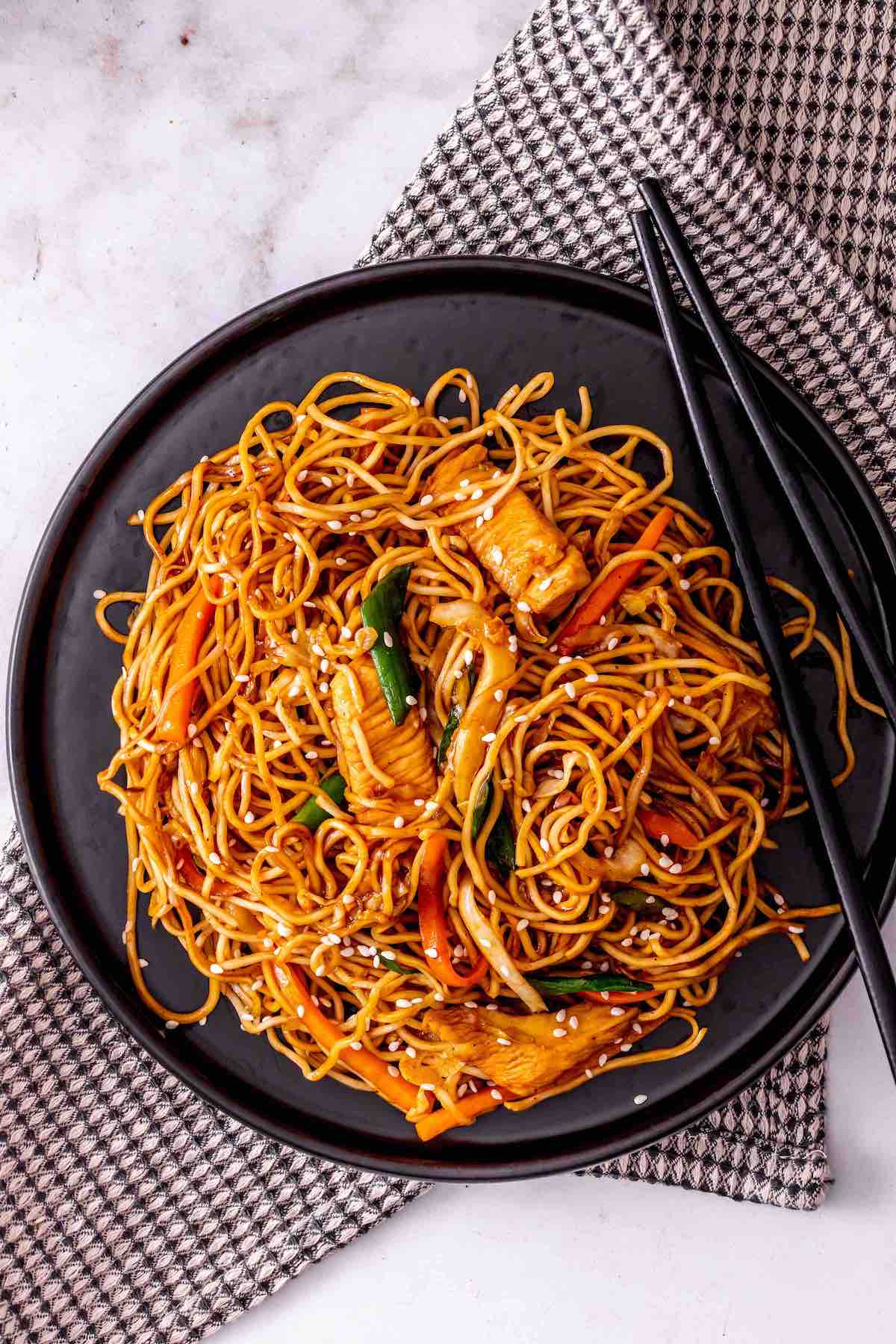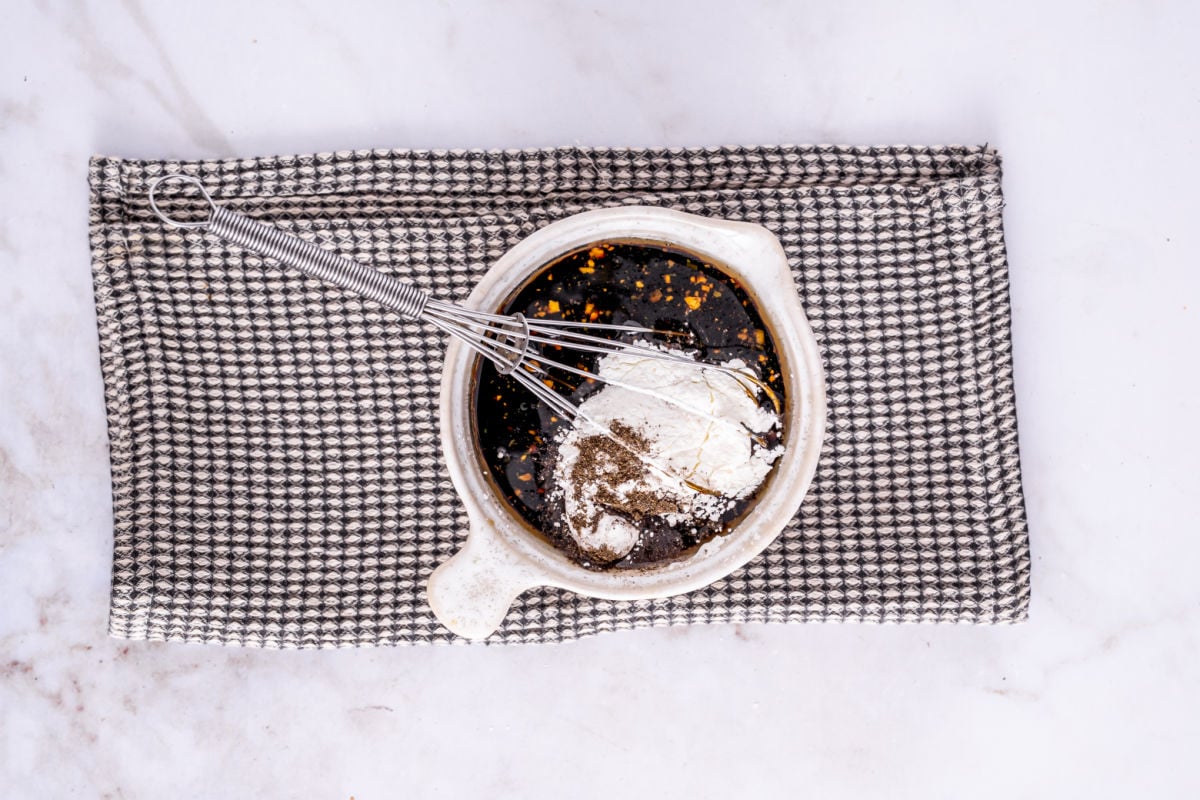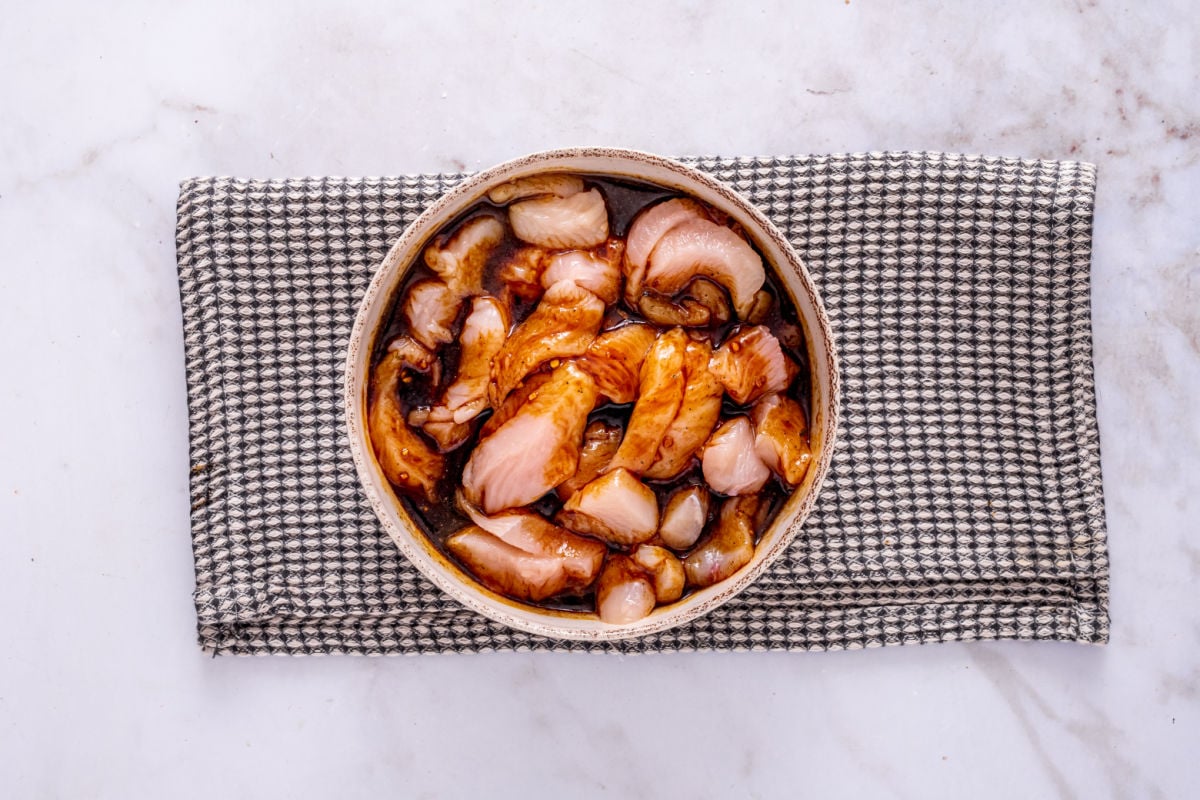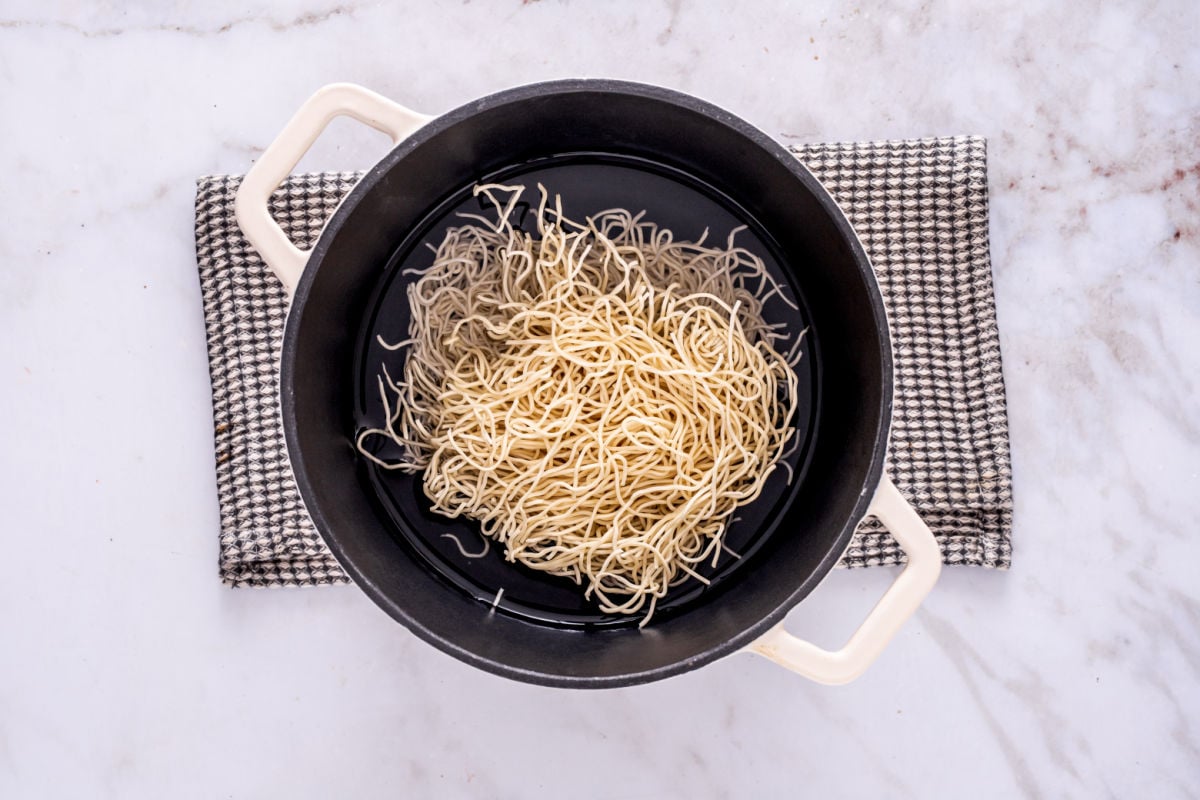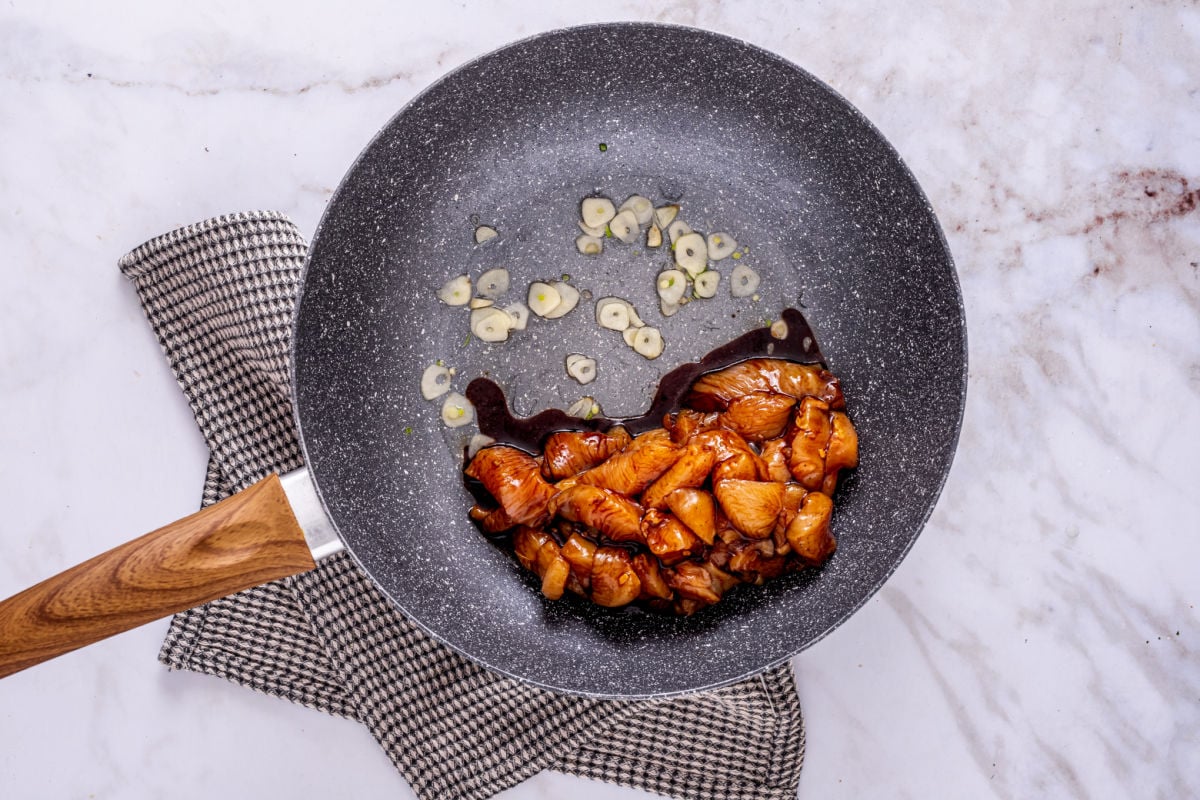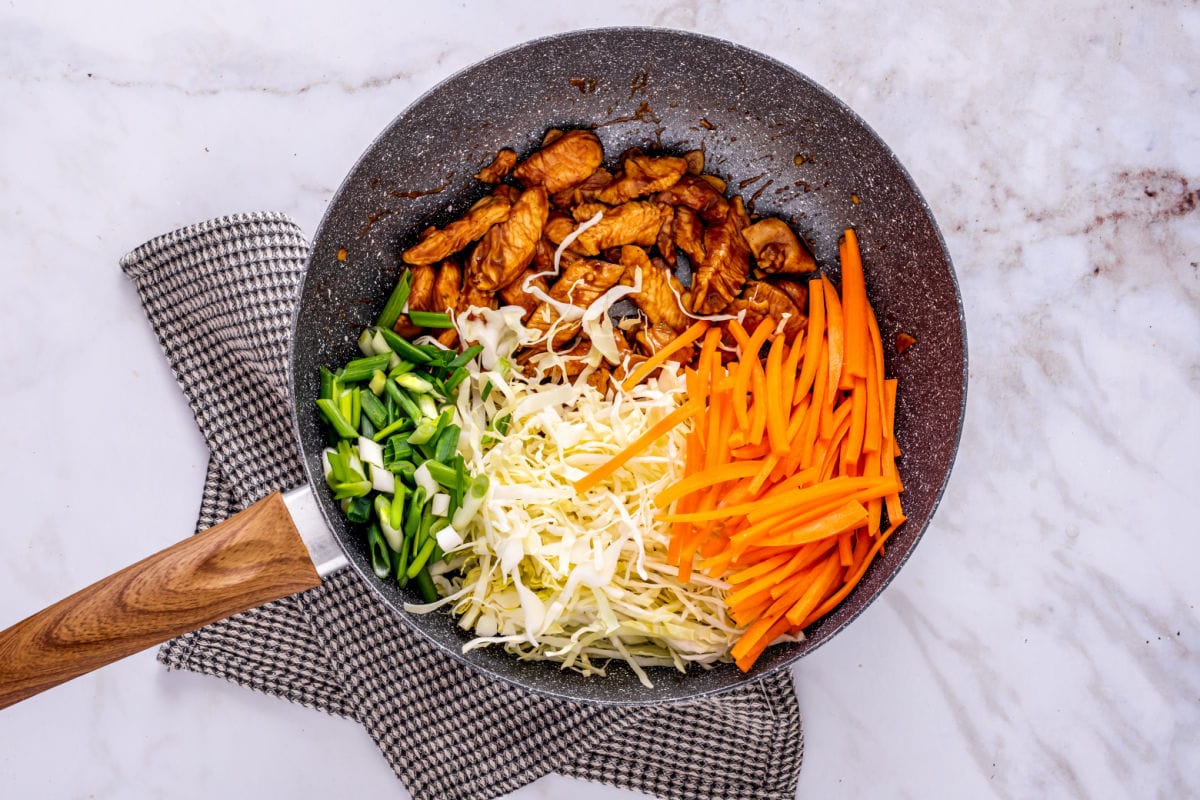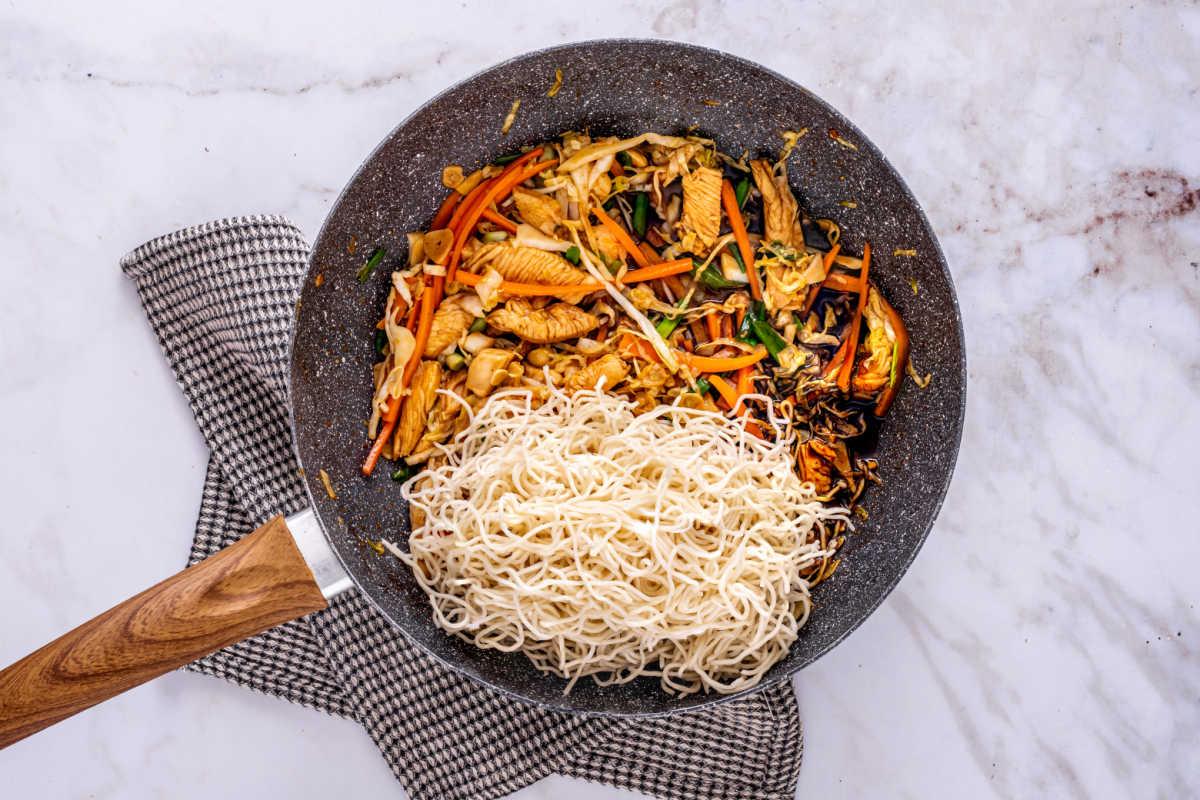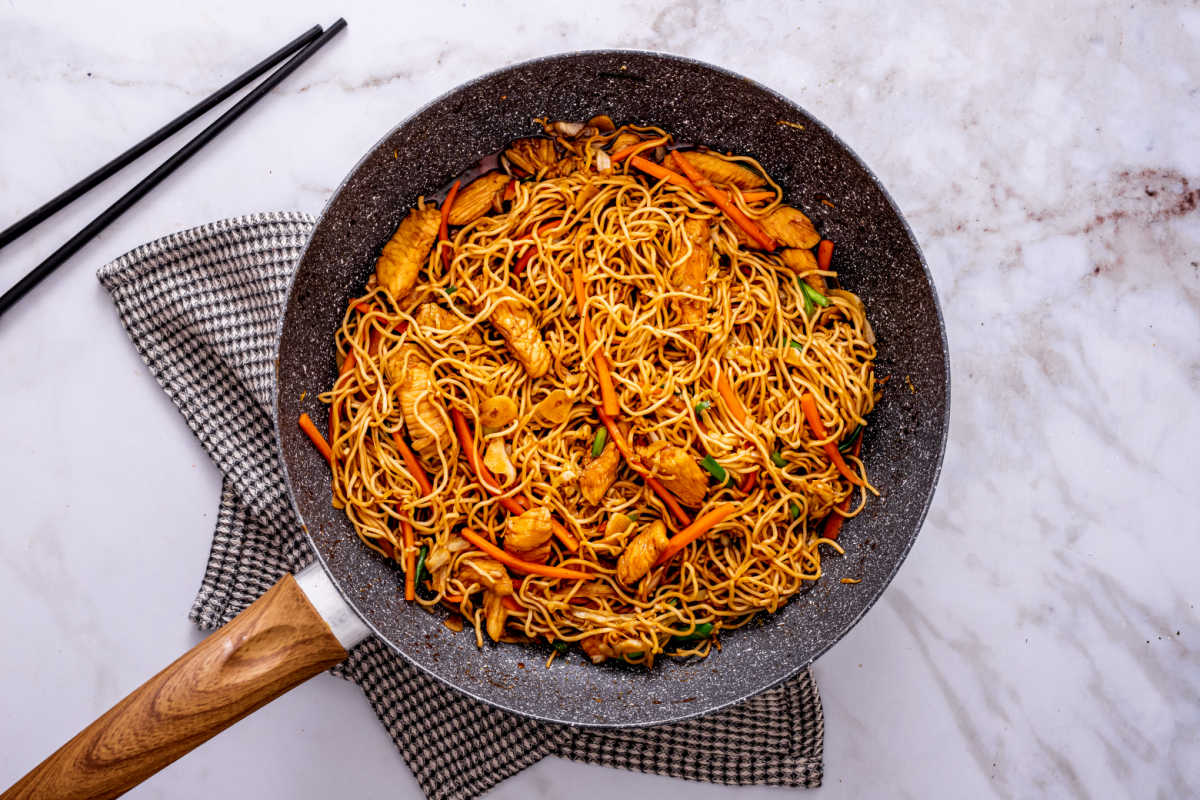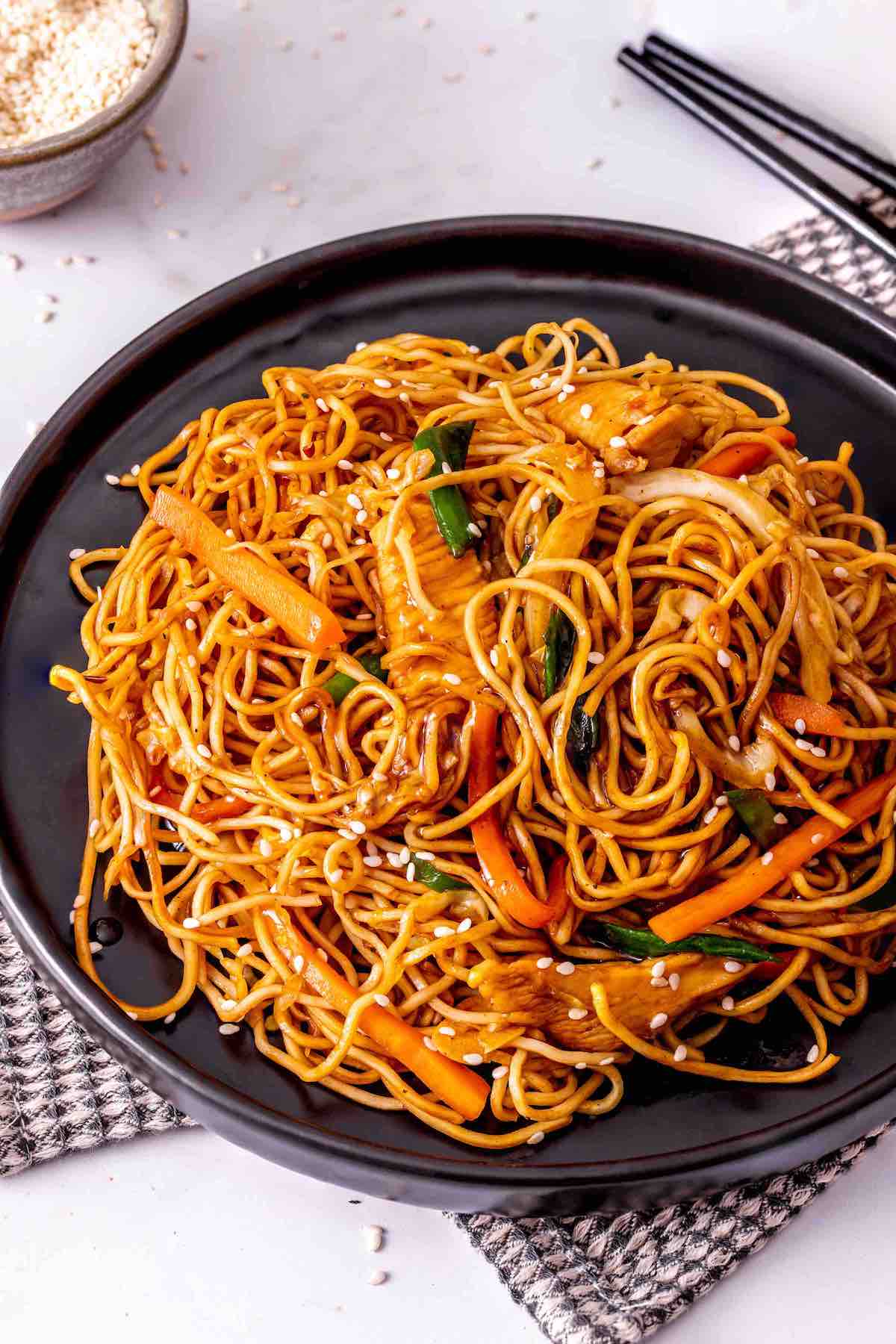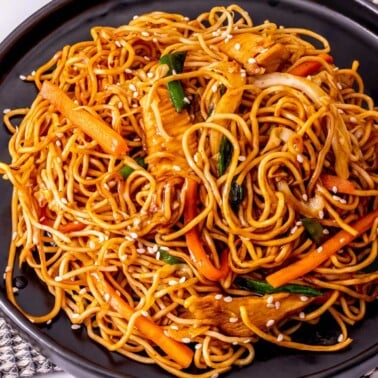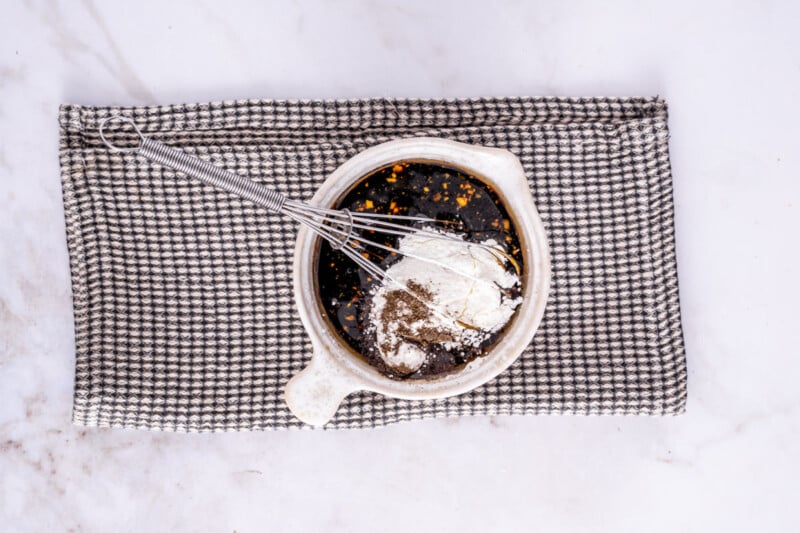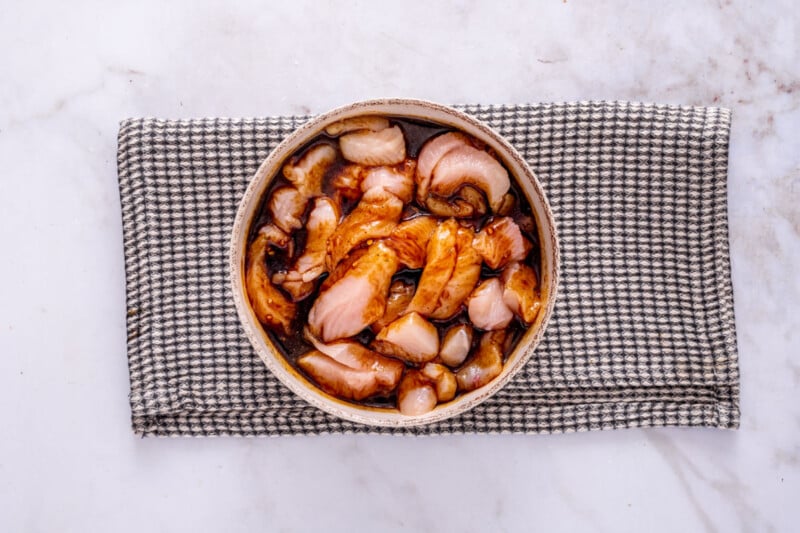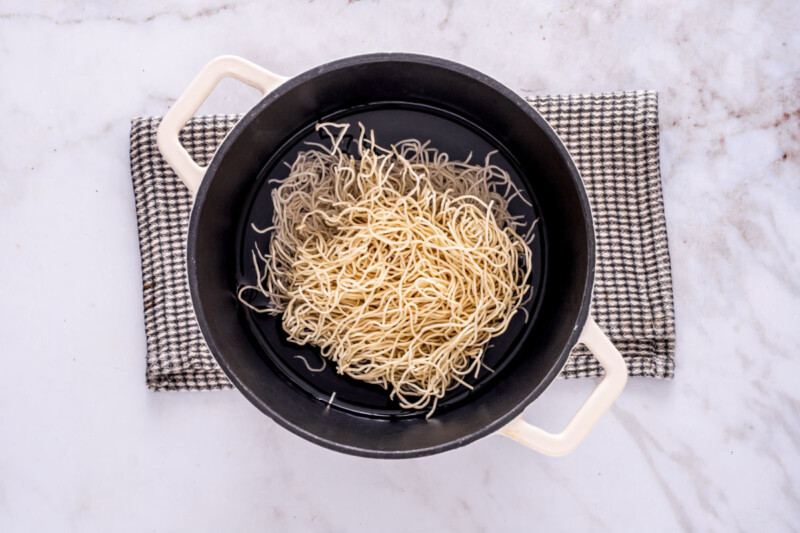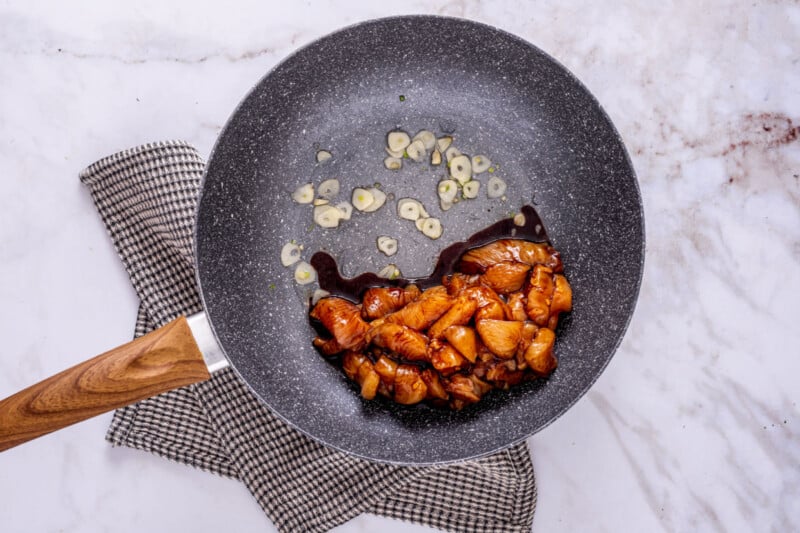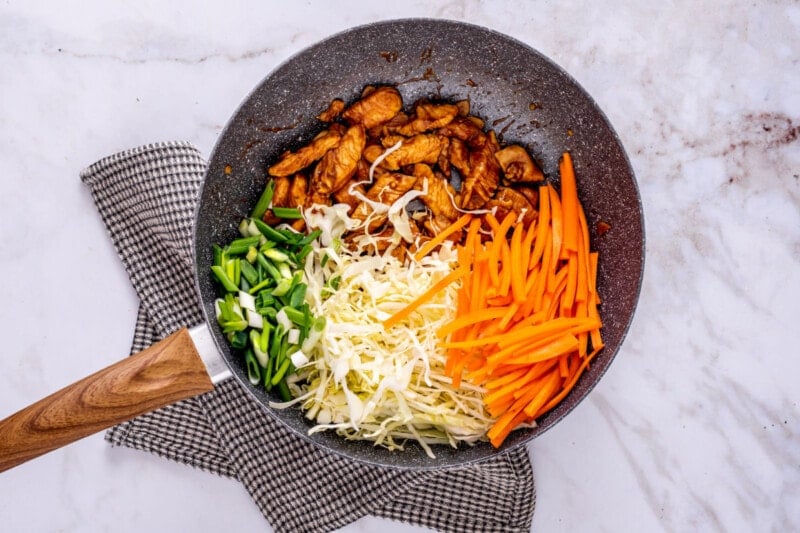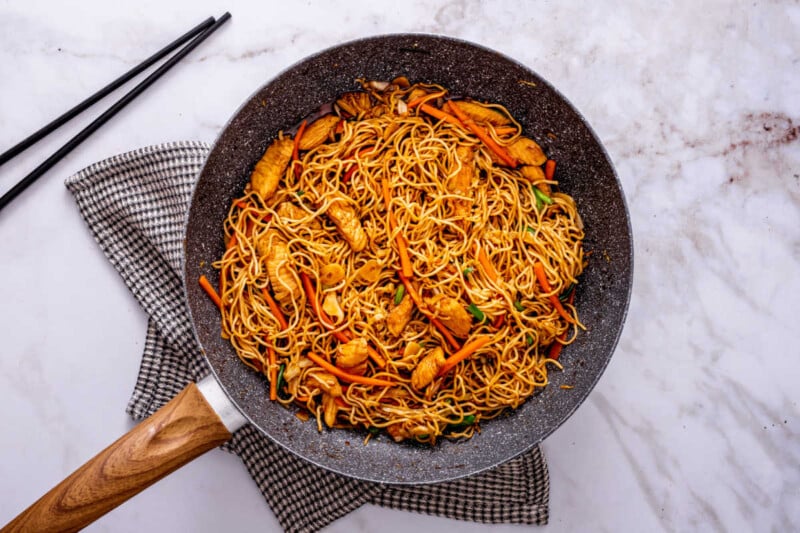Love easy noodle recipes? Try my spicy noodles, pad see ew, and curry noodles. I’m not going to lie, I love ordering Chinese takeout. Even coming from a half-Chinese background, it’s still my favorite. My dad’s chicken chow mein recipe, though, is such a winner, that I’d happily skip takeout any day for it!
Why I love this recipe
Easy to customize. This recipe is full of flavor, but there are endless opportunities to customize the dish and make it a bit differently every time. Budget-friendly. This recipe uses easy-to-find ingredients, many of which are shelf-stable, so there’s no reason to break the bank to make quality chow mein. Full of flavor. The sauce is loaded with flavor and gets soaked up perfectly when tossed in the noodles and tender chicken breasts. Quick and easy. This recipe is so fast; why not make some hot and sour soup, egg drop soup, or crab rangoons to go with it?
Ingredients needed
Chicken. The protein of choice, preferably boneless and skinless chicken breast that has been cooked and cut into cubes. If you don’t have chicken breast fillets on hand, swap it out for boneless chicken thighs or even tenderloins. Noodles. Preferably chow mein noodles, though spaghettini noodles will work as well. Oil. For sautéeing garlic and veggies. Any neutral cooking oil will work. Garlic and ginger. Two must-have aromatics for any stir-fried noodles dish. Cabbage, carrot, and spring onions. Finely slice the cabbage and carrot, and chop the onion into rings. Set some spring onions aside to use as garnish. Sesame seeds. For garnish.
For the chow mein sauce: Featuring egg-based noodles, chicken breast, and an assortment of stir-fried vegetables that are cooked in a brown savory, slightly sweet sauce, chicken chow mein is a popular Chinese recipe.
Chicken soup. For essential liquid. Chicken soup adds a ton of flavor, though it can be swapped for chicken broth or vegetable broth. Oyster sauce. Adds a sweet and salty flavor to the sauce. Soy sauce. You can use tamari if following a gluten-free diet. Sesame oil. An essential ingredient for all good Asian food. Shaoxing cooking wine. Adds complexity and a slightly sweet flavor. For a non-alcoholic option, you can use rice vinegar with 1/2 a teaspoon of sugar. Corn starch. A thickening agent for the sauce. Brown sugar. Adds a necessary sweetness. White pepper. More subtle than black pepper.
How to make chicken chow mein
I’ve included step-by-step photos below to make this recipe easy to follow at home. For the full printable recipe instructions and ingredient quantities, scroll to the recipe card at the bottom of this post. Step 1- Make the sauce. Begin by combining the sauce ingredients in a large bowl and mix well to combine. Step 2- Marinate. Then, mix the diced chicken with ¼ of the sauce and leave it to marinate for 10 minutes. Step 3- Cook the noodles. Prepare the noodles per the package instructions. When done, drain and set them aside. Step 4- pan fry chicken. Heat the oil in a wok and cook the garlic for 10 seconds. Then, add the chicken and cook until golden brown. Stir often to prevent burning. Step 5- Pan fry the vegetables. Then, add the cabbage, carrot, and spring onion. Let this cook for 2-3 minutes until the cabbage becomes tender. Step 6- Combine all the ingredients. Last but not least, add the noodles along with the rest of the chow mein sauce and cook until the chicken is fully warmed and the sauce has thickened. Step 7- Season and serve. Sprinkle fresh spring onions and sesame seeds over the final dish and serve warm.
Arman’s recipe tips
Work fast. A wok is designed to cook what’s on the bottom at high heat for a short amount of time. As more ingredients get added, the cooked ingredients rise to the top, so work quickly once you start cooking. Cook the chicken in the marinade. If you don’t already have cooked chicken, then you can let raw chicken breast marinade in the chow mein sauce before cooking and slicing. This will infuse even more flavor into the chicken. Don’t use hot chicken soup. Corn starch needs cold liquid to activate and help thicken the sauce, so make sure your chicken soup (or water) is cold or at least room temperature before.
Storage instructions
To store: Place leftover chicken chow mein in an airtight container and store in the fridge for up to one week. As we mentioned earlier, one of my favorite things about this recipe is how easy it is to customize. Here are some recommendations:
Switch up the protein. This recipe is called chicken chow mein, but you can easily swap the chicken for pork, beef, shrimp, or tofu. Use different noodles. Udon noodles, egg noodles, and ramen noodles are all fabulous alternatives. Switch up the vegetables. Toss in some broccoli, green beans, snow peas, and bell peppers, or top the final dish with bean sprouts. Make it spicy. Add red chili flakes, chili sauce, or Sriracha to make the dish as spicy as you’d like.
To reheat: Transfer chicken chow mein to a skillet and heat at medium heat until the dish is fully reheated, frequently stirring. The microwave will also work. Simply heat in 30-second intervals until fully warmed. To freeze: Allow noodles to cool completely and transfer them to an airtight container or freezer bag and freeze for up to 6 months.
Frequently asked questions
More Asian takeout-inspired recipes to try
Hunan chicken Pineapple chicken Mongolian chicken General Tso’s chicken
